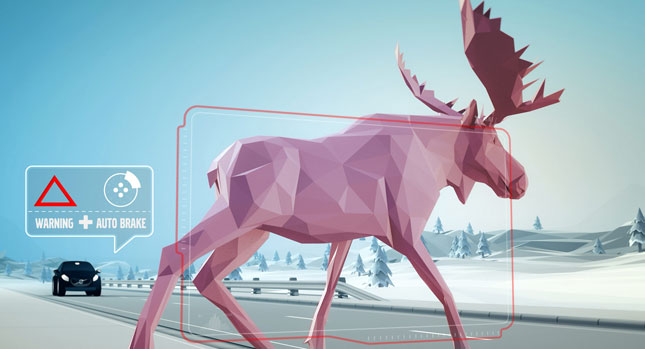It may not come as a surprise to you that Volvo will be cramming all of its latest and most advanced “safety and support features” into their all-new XC90, which is set for its official debut around the end of next year, but they are.
In fact, they even put out a press release to inform us that their next flagship SUV will be getting Pedestrian Detection in darkness, road edge and barrier detection (which works on roads without side markings) and adaptive cruise control, with both of the latter two also featuring “steer assist.”
Thomas Broberg, who is Senior Safety Advisor for Volvo explains: “When the first XC90 was introduced in 2002, it featured a number of groundbreaking safety features, including a world-first solution that helps prevent rollovers. By revealing a number of systems for the next generation XC90 we once again confirm our leadership in automotive safety.”
The fact that it has mass appeal to a wide range of prospective buyers means that the XC90 must cater for all their needs, but it’s still safety that is on people’s mind when they think of the now Chinese-owned Swedish brand. Thus, Volvo trying to have nobody get killed in any of their cars by the year 2020 will definitely count, and rest assured that you will be reminded that this is their goal, should you ever set foot in one of their showrooms.
By Andrei Nedelea
From Volvo press release: “The new technologies for the upcoming Volvo XC90 will be tested by a number of international media representatives this summer. The technologies are:
- Pedestrian Detection in darkness. A world first that makes the detection and auto brake technology work effectively also when driving in darkness. The technology includes detection and auto brake for other vehicles, pedestrians and cyclists.
- Road edge and barrier detection with steer assist. A feature that detects if the car is about to drive off the road and autonomously applies steering torque to bring the vehicle back on track. Being able to monitor where the physical road ends is a world first. This means that the technology also works on roads without side markings.
- Adaptive Cruise Control with steer assist. A technology that helps the driver stay in the lane and follow the rhythm of the traffic. The new system automatically follows the vehicle ahead.”
PHOTO GALLERY

















